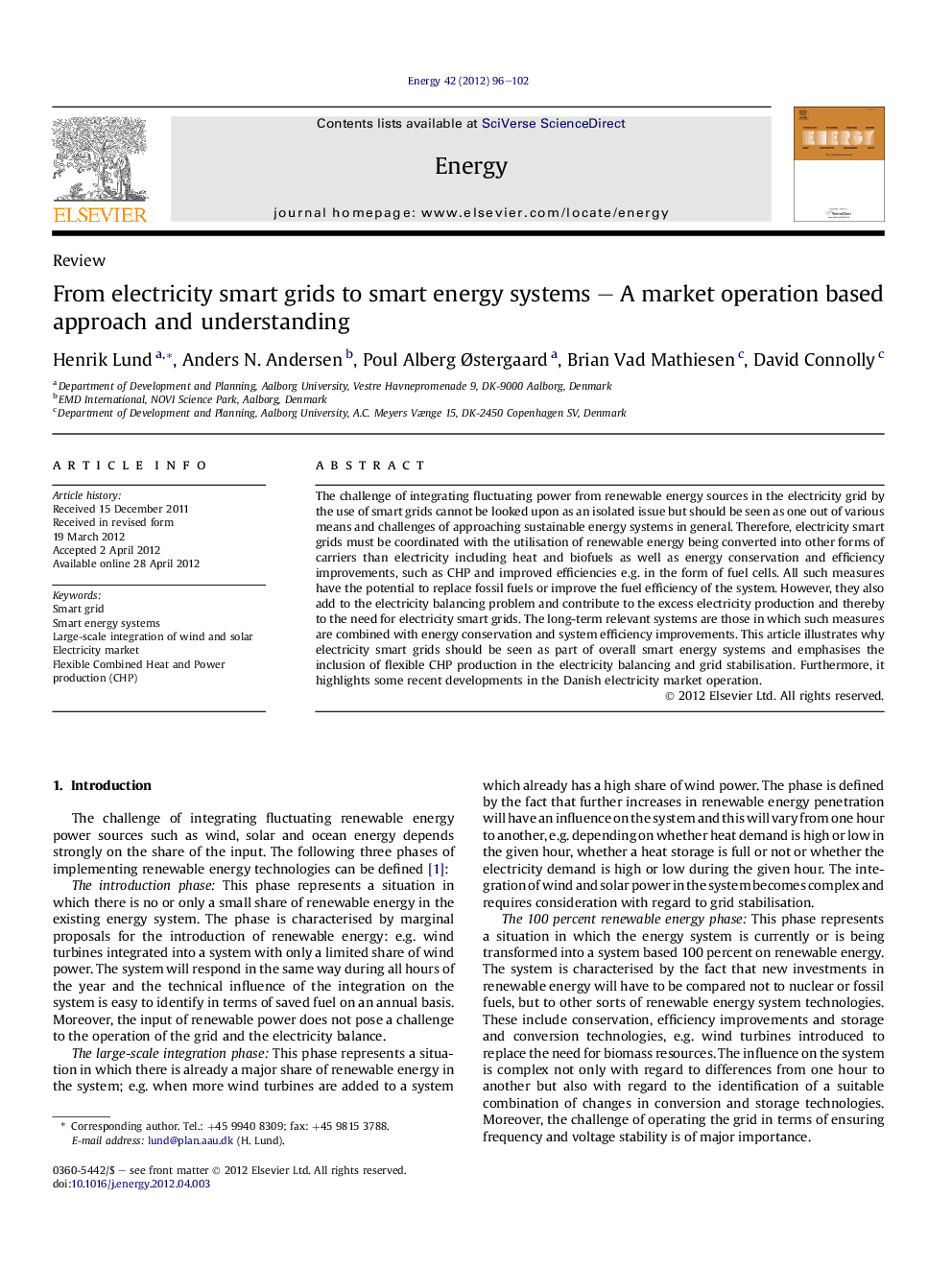| Article ID | Journal | Published Year | Pages | File Type |
|---|---|---|---|---|
| 1733804 | Energy | 2012 | 7 Pages |
The challenge of integrating fluctuating power from renewable energy sources in the electricity grid by the use of smart grids cannot be looked upon as an isolated issue but should be seen as one out of various means and challenges of approaching sustainable energy systems in general. Therefore, electricity smart grids must be coordinated with the utilisation of renewable energy being converted into other forms of carriers than electricity including heat and biofuels as well as energy conservation and efficiency improvements, such as CHP and improved efficiencies e.g. in the form of fuel cells. All such measures have the potential to replace fossil fuels or improve the fuel efficiency of the system. However, they also add to the electricity balancing problem and contribute to the excess electricity production and thereby to the need for electricity smart grids. The long-term relevant systems are those in which such measures are combined with energy conservation and system efficiency improvements. This article illustrates why electricity smart grids should be seen as part of overall smart energy systems and emphasises the inclusion of flexible CHP production in the electricity balancing and grid stabilisation. Furthermore, it highlights some recent developments in the Danish electricity market operation.
► Describe why smart grids should not be seen as separate from the other energy sectors. ► What the integration of the other sectors means for the identification of proper solutions to the integration of wind. ► Present some important recent development of market integrated solutions to the electricity balancing task.
